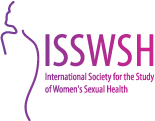Morning
07:00 a.m. - 08:00 a.m.
Special Interest BreakfastLocation: Emerald Ballroom 2+3
Basic Science Research: Link to Clinical FSD
Melissa A. Farmer, PhD & Noel N. Kim, PhD
Pre- and Postmenopausal Sexual Pain: Vulvodynia/Vestibulodynia Diagnosis and Treatment
Murray Freedman, MD & James A. Simon, MD, CCD, NCMP, IF, FACOG
Midlife Sexuality and Menopause Management: Including Systemic Hormone Treatment
Stephanie S. Faubion, MD, FACP, NCMP, IF & Sharon J. Parish, MD, IF, NCMP
Contemporary Understanding and Management of Persistent Genital Arousal Disorder: A New Epidemic with Multiple Etiologies
Irwin Goldstein, MD, IF & James G. Pfaus, PhD
08:00 a.m. - 09:00 a.m.
State of the Art 2 - Future TreatmentsLocation: Crystal Ballroom DEFModerator: Anita H. Clayton, MD, IF
Future Treatments
Irwin Goldstein, MD, IF
09:00 a.m. - 10:00 a.m.
Stump the ProfessorLocation: Crystal Ballroom DEFModerator: Aleta M. Baldwin, PhD, MPH
Melissa A. Farmer, PhD, Irwin Goldstein, MD, IF, Crista E. Johnson-Agbakwu, MD, MSc, IF & Sharon J. Parish, MD, IF, NCMP
10:00 a.m. - 10:30 a.m.
Coffee Break - Visit ExhibitorsLocation: Crystal Ballroom Foyer
10:30 a.m. - 12:00 p.m.
Instructional Course 2 - Addressing Sexual Function and Quality of Life after Cancer TreatmentLocation: Crystal Ballroom ABCFaculty: Jeanne Carter, PhD, Shari Goldfarb, MD, David M. Kushner, MD & Stacy Lindau, MD
10:30 a.m. - 12:00 p.m.
Research Podium Session 2 - Clinical Trials & SurgeryLocation: Crystal Ballroom DEFModerator: Timothy C. Hlavinka, MD, IF
10:30 a.m. - 10:40 a.m.
A Placebo-Controlled, Randomized, Double-Blind, Three Period, Three-Way Crossover Study on the Hemodynamic and Pharmacokinetic Interactions of Bremelanotide and Ethanol (#010)
L.R. DeRogatis
10:40 a.m. - 10:50 a.m.
Efficacy of Multimodal Physiotherapy Treatment Compared to Overnight Topical Lidocaine in Women with Provoked Vestibulodynia: A Bi-center Randomized Controlled Trial (#011)
Melanie Morin, PhD, MSc
10:50 a.m. - 11:00 a.m.
Potential Sexual Changes Resulting from LEEP (#012)
R. Rollston
11:00 a.m. - 11:10 a.m.
Effect of Intravaginal Prasterone on Sexual Dysfunction in Postmenopausal Women with Vulvovaginal Atrophy (#013)
C. Martel
11:10 a.m. - 11:20 a.m.
A Phase 2 Program on Female Sexual Arousal Disorder and Hypoactive Sexual Desire Disorder: Patient Characteristics and Implications for Diagnosis and Treatment of Female Sexual Dysfunction (#014)
S. Althof
11:20 a.m. - 11:30 a.m.
Evaluation of Clinical Meaningfulness in the Flibanserin HSDD Clinical Development Program (#015)
James A. Simon, MD, CCD, NCMP, IF, FACOG
11:30 a.m. - 11:40 a.m.
Vulvoscopic Findings, Patient Reported Outcome (PRO) Measures, and Hormonal Blood Test Values in Menopausal Women with Female Sexual Dysfunction Pre- and Post-Hormonal Treatment: A Retrospective Single Center Study (#016)
Irwin Goldstein, MD, IF
11:40 a.m. - 11:50 a.m.
Meta-Analysis of Orgasmic and Overall Sexual Function Post Mid-Urethral Sling Surgery (#017)
N. Szell
Afternoon
12:00 p.m. - 01:00 p.m.
Lunch & Learn 2 - Women Who Have Sex With WomenLocation: Crystal Ballroom ABCFaculty: Patricia A. Robertson, MD & Jordan Rullo, PhD, LP
12:00 p.m. - 01:00 p.m.
Lunch & Learn 1 - Physical Disabilities and Sexual HealthLocation: Crystal Ballroom DEFFaculty: Frederique J. Courtois, PhD & Mitchell S. Tepper, PhD, MPH
01:00 p.m. - 02:30 p.m.
Symposium 2 - Master Journal ClubLocation: Crystal Ballroom DEFModerators: Melissa A. Farmer, PhD & Susan Kellogg-Spadt, PhD, CRNP, IF
Research Coming to Terms with Menstrual Cycling
Julia R. Heiman, PhD, BA
Sexuality Literature Update: A Gynecological Perspective
James A. Simon, MD, CCD, NCMP, IF, FACOG
Sexuality Development and Sexual Wellbeing in Adolescent Women
Dennis Fortenberry, MD, MS
02:30 p.m. - 03:00 p.m.
Coffee Break - Visit ExhibitorsLocation: Crystal Ballroom Foyer
03:00 p.m. - 04:00 p.m.
State of the Art 3 - SSTAR LectureLocation: Crystal Ballroom DEFModerator: Jordan Rullo, PhD, LP
Narratives in Sexual Medicine: Why We Need Stories
Daniel N. Watter, PhD
04:00 p.m. - 05:00 p.m.
Menopause Expert PanelLocation: Crystal Ballroom DEFModerators: Alan Altman, MD, IF, Margery Gass, MD & James A. Simon, MD, CCD, NCMP, IF, FACOG
05:00 p.m. - 05:15 p.m.
ISSM LectureLocation: Crystal Ballroom DEFModerator: Sharon J. Parish, MD, IF, NCMP
05:00 p.m. - 05:15 p.m.
Restoring Sexual Life after Prostate Cancer Surgery – The Importance of Including the Partner
Wayne J.G. Hellstrom, MD
